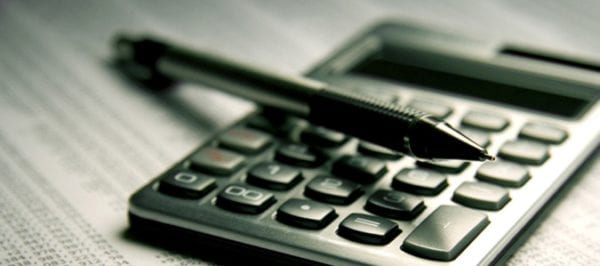
When you need cash flow for your business then it’s quite possible that factoring might be the answer to your problems. However, before you rush out and begin factoring – it’s important to understand your options and how they may work for you (or against you).
What Is Factoring?
Factoring is a straightforward process that enables a business to sell on its accounts receivable or outstanding invoices to someone else or to a corporate entity. This third party is known as “the factor”. The concept is simple; the factor acquires the outstanding debts at a discount typically in the range of 2-6% of the value of the invoices and pays immediately for a portion of the invoiced value (70-90%). When the invoices are paid; the factor receives 100% of their face value. They then pay any outstanding portion owed to the business owner immediately.
Why Would a Business Use Factoring?
Businesses typically use factoring when they face a cash flow problem. It might be that they need to pay a supplier or to finance expansion to meet a customer’s needs. If they have outstanding invoices; they should, in theory, eventually have the money to pay for this but don’t have the cash in the bank at the moment of need.
The factor stands to make a profit for a limited amount of effort on their part. Assuming the invoices are legitimate and the debtor(s) are in good standing – the invoices will eventually be paid and the factor receives a premium on their investment.
How Does Factoring Work?

Factoring is a quick process but not an instant one. The factor pays your business approximately 70 to 90% of the total value of the invoices they are factoring (it’s worth noting you are not obliged to factor your entire outstanding collection of invoices but may factor a part of the total or all of it). This payment is made quickly – sometimes in a few hours after engaging the factor.
Before a factor makes a decision and offers you a factoring rate; they’ll need to do a bit of background work themselves. They’ll want to examine your invoices and the customers they relate to. A factor isn’t going to want to take on huge amounts of risk – so the more creditworthy your customers are the more likely they are to give you a good deal.
Once the deal has been agreed to both parties satisfaction; the factor will then contact your customers to let them know that they should make payments on the invoices directly to the factor. They will explain the service that you have agreed to at this point in time too.
If any part of the outstanding balance belongs to your business as part of the factoring deal; the factor pays this money to you once they have collected the money from your customers.
Exceptions to the Rule
There are factoring services which work in slightly different ways to the one described above. It’s also worth noting that some factors will be OK to take on higher levels of risk than other factors will; so if you’re turned down for factoring by one provider – you might want to talk to another.
The Two Main Types of Factoring

In most cases there are two kinds of factoring that are available to businesses:
- Recourse factoring. With this type of factoring your business offers the factor recourse if a customer fails to pay their invoice. That is, if your customer doesn’t pay up in x amount of time, you will be expected to pay the factor back. This means that you take on the majority of risk and as such – you’re likely to get a preferential rate on factoring like this.
- Non-recourse factoring. This type of factoring requires that the factor assume all the risks of non-payment from the client. That means if your customer doesn’t pay; the factor ends up out of pocket. As you might expect; factors involved in non-recourse factoring will do more thorough background checks on the creditworthiness of your customers and they are likely to charge you a higher fee for the service than in the case of recourse factoring.
There are then several sub-categories of factoring that may be used to provide the factor with surety for their investment:
- Accounts-receivable – the factor accepts your accounts receivable as a guarantee for their investment. Typically factoring here is recourse factoring and that means you are accepting the majority of the burden of risk for the deal.
- Bulk factoring – sometimes known as in-house factoring – this allows you to trade off against the total value of invoices outstanding whilst retaining control of customer management and debt collection.
- Debt factoring – if you have invoices that have been outstanding for so long that they are essentially “bad debt”. You may be able to use a debt-factoring service to take them off your hands. This can be expensive but it does mean you see some return on that debt without having to take action to recover it yourself.
- Full advance factoring – a full advance factoring arrangement is one where (for a large discount on their value) the factor takes full control of invoicing in a non-recourse style agreement. The factor also assumes any legal liability for debt collection.
- Invoice factoring – instead of turning over all of your accounts receivable; you might want to hand over specific customer invoices for the guarantee instead. The factor not only assumes responsibility for collection but also uses the goods you have supplied as part of the security for the investment. That means if the customer doesn’t pay; the factor can take action to seek return of the goods.
- Maturity factoring – also known as collection factoring – with this form of factoring you surrender the majority of control over invoicing and collection to the factor. In exchange whenever a payment is due; the factor covers it regardless of whether the customer has paid or not.
How Much Does Factoring Cost?

As you might expect the more risk that a factor assumes; the higher the charge to be made for factoring. A low risk deal involving small amounts owed by customers with perfect credit ratings might cost as little as 2% for 90 days. A high risk deal involving large amounts with customers who have precarious credit ratings might set you back much more.
You should also examine the specific terms of the deal. For example, one factor might offer a fixed 2% for their involvement whereas another might offer 2% for the period of the loan – in the first case you pay 2% even if your customer pays the factor the day after you do the deal; in the second case you’d pay 1/90×2% which is much less money.
The best rates are likely to come from factors who work with businesses of a similar nature and scale as your own business.
Other Things to Know About Factoring for Small Businesses

Always do your homework when it comes to factoring; in essence factoring is a specialized form of lending and as with all forms of lending – there are sharks out there alongside highly reputable companies. Get the right deal for your business and if you don’t know what that will look like; try to involve your accountant in the selection process.
Factoring is generally going to be the best solution for businesses with healthy order books, low debts and temporary cash flow issues. It’s not a good fit for businesses that are teetering on the edge of bankruptcy.
